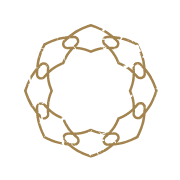Movement Quality…
Movement Quality is the bedrock of our programming at Uptown Movement. For us, the point of coming to the gym is not about lifting some weights and doing a little stretching to build muscle or lose weight. Instead, it is a mindful and egoless exploration of self-betterment. Movement Quality is the variable we use to stay true to that belief.
The concept of Movement Quality is the thread that connects the fabric of training. We can look at it, in more practical terms, as the control and deliberate execution of your movement. But let’s go a little deeper and look at two major ways movement quality affects your results: adaptation and progression.
Adaptation
Ultimately, training is about adaption. This means applying a stimulus that forces the body to adapt, so it’s better equipped to meet the demand the next time that stimulus is applied. The more we expose ourselves to a certain movement pattern, the more ingrained that pattern will be. While no movements are inherently “bad”, it’s important to recognize that we adapt to sitting, slouching, and carrying imbalanced loads … just as much as we COULD adapt to rotations and strong postures. Ideally, we seek out and practice those patterns that allow for freedom in your body, rather than restriction.
For example, look at this video. Although this guy is trying hard (and should be commended for his commitment!), continuing to move this way will teach his spine to adapt to the patterns he demonstrates in the video.
Contrast that to this video of an Uptown Movement class. Here, you can see much more control and freedom in the movement. Ultimately, this will serve you better in the decades ahead.
Progression
Movement Quality is a great indicator of whether we are ready to progress. If you were to chase weight constantly, without any regard for how you moved, then you might be able to lift a heavier weight in a shorter period of time. This is a false win, though. When you lose your ability to control the load you are attempting, your body will compensate — just to make the thing happen.
Like this poor kid here! He just really, really wanted to get that weight to his chest and his body tried its hardest to do it for him. However, if he had paid attention to the feedback he was getting from lighter weights, he would have known that even if he did lift the heavy weight, it would not produce the adaptation he wanted. Paying attention to your movement quality will tell you when you are TRULY ready to move up to a heavier load.
Obstacles of Ego and Fear
This is a perfect example. That guy in the video will benefit from exploring his relationship with ego. Likewise, people who maintain immaculate movement quality, but refuse to explore heavier loads or more complex moves, must explore the role played by fear in their lives.
This is what we mean when we say that weight training teaches us much deeper lessons. Awareness of our movement quality makes those lessons available.
Having said that, sometimes you have to push it to test where you are. If this is done intentionally, deliberately, and relatively infrequently, then I am all for it. That’s not ego: it’s exploration.
Same thing for those who are moving well, staying aware of how they move, and have no desire to push or expand for the moment. Also, completely OK. It’s not fear: it’s a deliberate choice to practice at a specific level, and you can make another choice on another day.
Both situations involve using awareness as a tool to refine your movement quality.
Your North Star
Movement Quality is your guiding star when you’re starting out training. You can use it as a compass to discover where you are and what you should be working on. Start with uncomplicated and simple moves so you can learn what it feels like to be in control. Then you add load to those and work towards building control with the added load. Then you layer in complexity and variety following the same recipe.
A word of warning to sum it up
Paying attention to your movement quality is an incredible way to build your capacity, strength, and — most importantly — confidence in movement. However, you can fall into the same traps of envy that show up in every other aspect of training. Looking at how someone else moves, and longing for their movement while not listening to your own body, is a fast trip to frustration or injury. It’s the same result as looking at how strong someone is or how defined their physique is.
Use movement quality as a guide, not a destination. “Quality” is utterly elusive. As we build more awareness, control, and mindfulness around movement, we explore increased ranges of motion, complexity, and loads. This will open up new ways to improve our control and become more intentional.
Fall in love with the never-ending process, rather than rushing headlong to the non-existent end!
